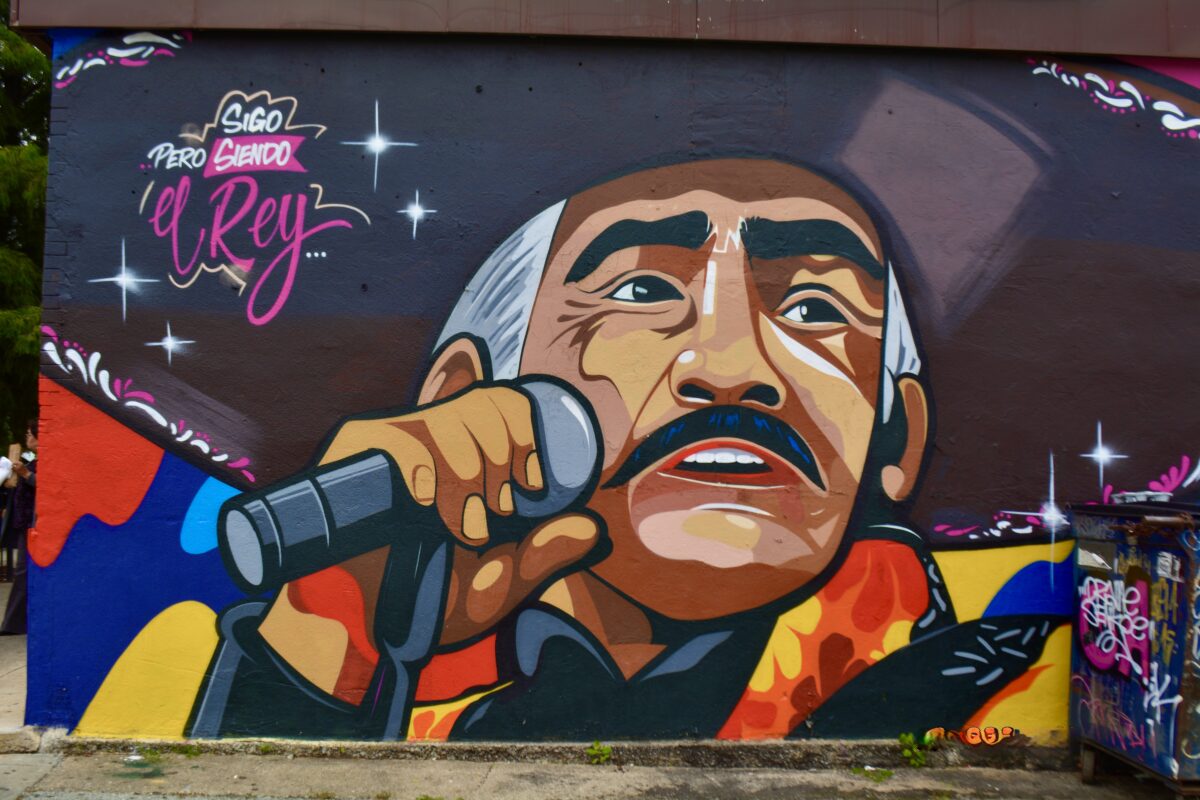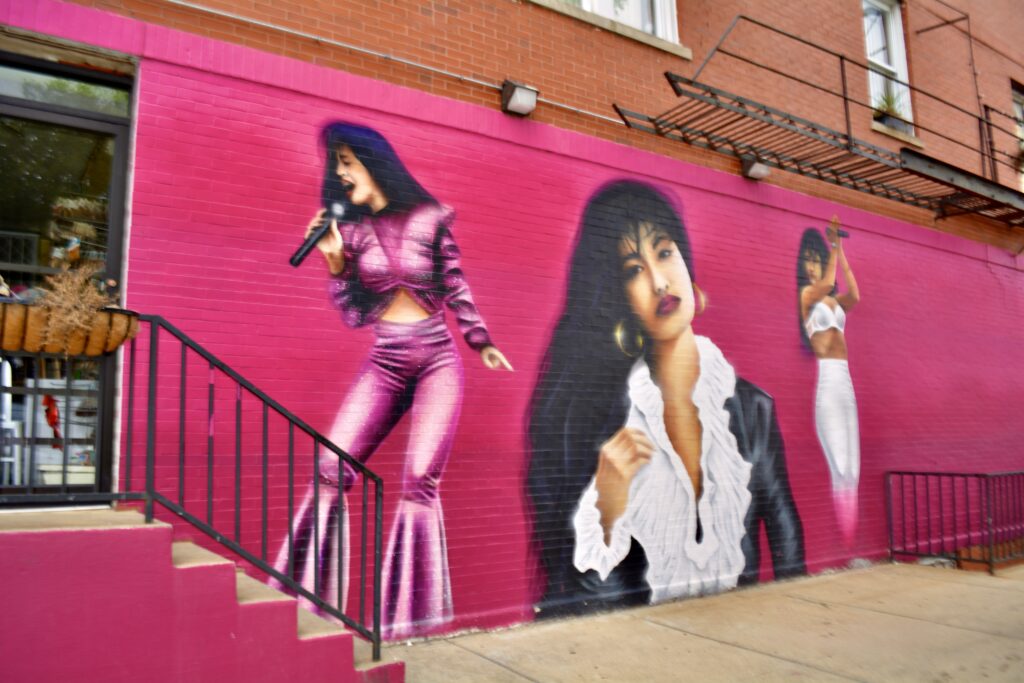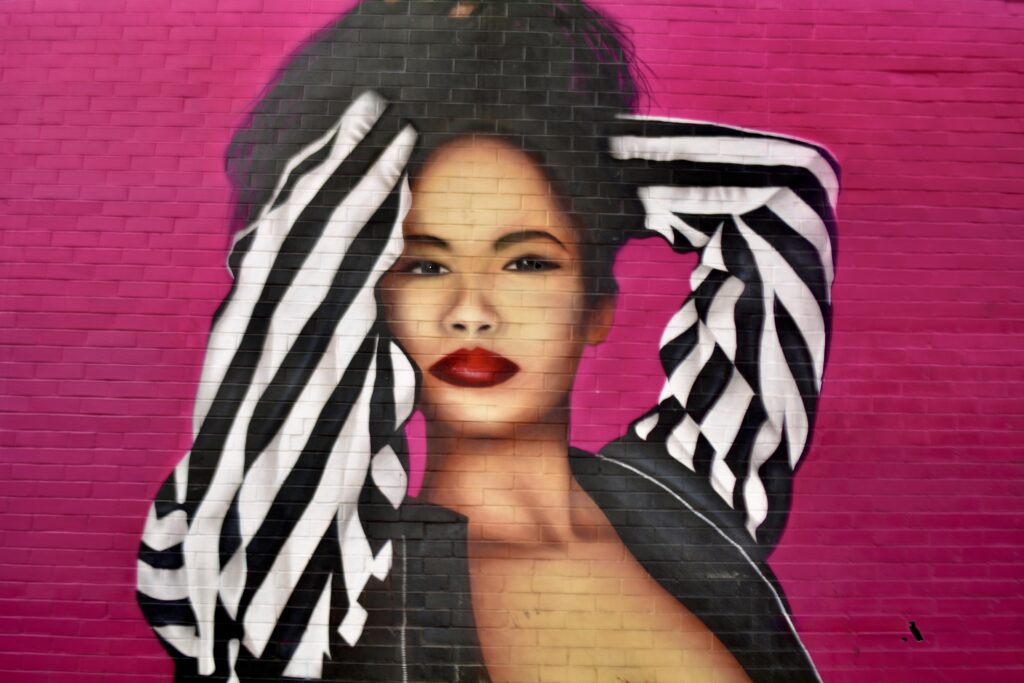I was only five when we arrived in Chicago from Mexico through California in October, 1988. My father was a lifelong mariachi and had been traveling to the United States for work. Some of my earliest memories of commuting to school include my father driving my siblings and me from La Villita to Pilsen. I knew that we were near Jungman Elementary when I saw the row of indigenous men painted on concrete walls. They fascinated me. I wanted to know who they were.
The murals of Pilsen marked the start of my everyday commute as a young girl. When I moved back to Pilsen as an adult, these murals called to me, partly due to the nostalgia of my father driving us to school.
At 18th & Wood St., there is a mural of Mexican icons that includes two depictions of singer Joan Sebastian, who holds a microphone while riding a horse. Once a Chicago local, Sebastian later became a famous Grammy-winning artist, composer and actor.
I recently sat down with my father Nicolas Diaz, now seventy-two, who described Joan Sebastian as a timeless composer and as a Pilsen local: a waiter and car salesman with a dream, talent, and charisma. I think of my uncle, who asked to listen to his music during his last moments on his deathbed.
On Cermak & Wood St. is a mural of the 1990s Tejano superstar Selena. Painted in 2019 by the artist ASEND as part of a project initiated by Inner City Culture, the mural is transformed from the traditional style through the use of spray paint. Across a bright magenta background is a carousel of portraits of the twenty-three-year-old Mexican American singer, whose young career tragically ended when she was murdered by her own fan club manager in 1995. I remember when the news hit, the whole block was in shock; we mourned her as an entire country.
On the wall of a Xurro store at Cermak & Wolcott is a spray-painted mural of the icon Vicente Fernandez, also known as Chente. If you are Mexican, you are probably thinking of your favorite Chente song right now, or will likely listen to it after you read this article! He was best known for his music, but he was also an actor. Before we migrated, my dad visited Chicago in 1986, and had the opportunity to meet him. He said that Chente always had his own mariachi, but invited them to play with him at Teatro Mexico in Milwaukee.
DRAINE ONE, a Mexican graffiti artist, uniquely captured a close-up of Chente in a rich and modern way: vibrant colors singing and with a line from the unofficial Mexican national anthem, Chente’s Song “El Rey”: “..sigo siendo el rey”, or “I continue to be king.” The message speaks to every Mexican who financially struggles and remains optimistic. It’s our culture, our nature, our way of being.
I asked my father how he feels about the murals honoring the late Mexican singers and if he likes them. “Yes, of course, they are important,” he said. “To us, they are very important.”
Dulce Maria Diaz was born in Tumbiscatío de Ruiz in Michoacán, Mexico and raised in Chicago. She is a multidisciplinary, self-taught artist. Following her study of business for artists at the University of Chicago, Dulce founded an arts and education non-profit organization, S.H.E. Gallery (Sharing Her Energy Gallery) in 2015. She is an adjunct lecturer for the Art Institute and works with other educational organizations such as Art Muse Chicago and Childhood Victories, as well as leading mural art clubs with Chicago Public Schools.




